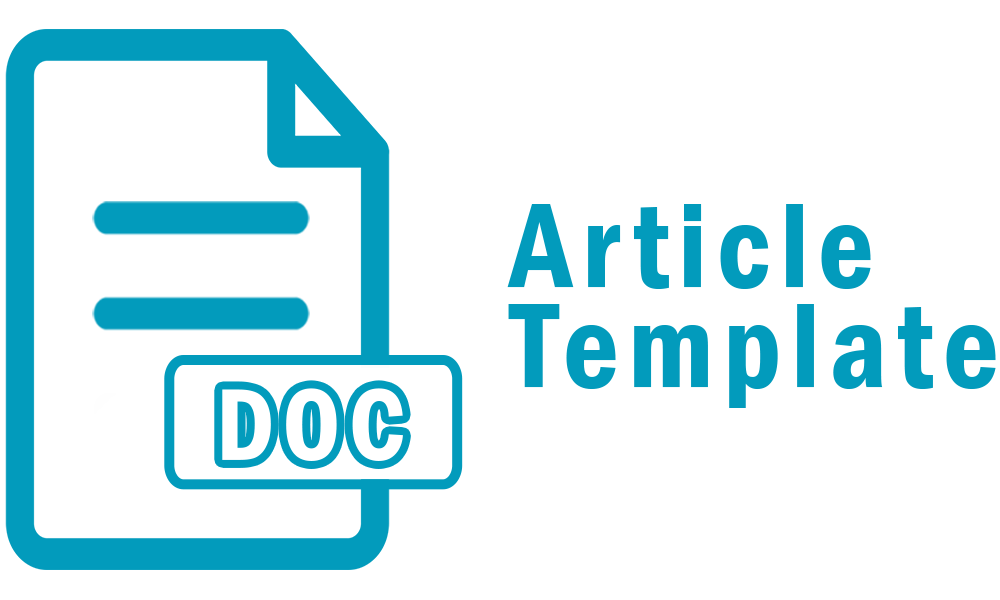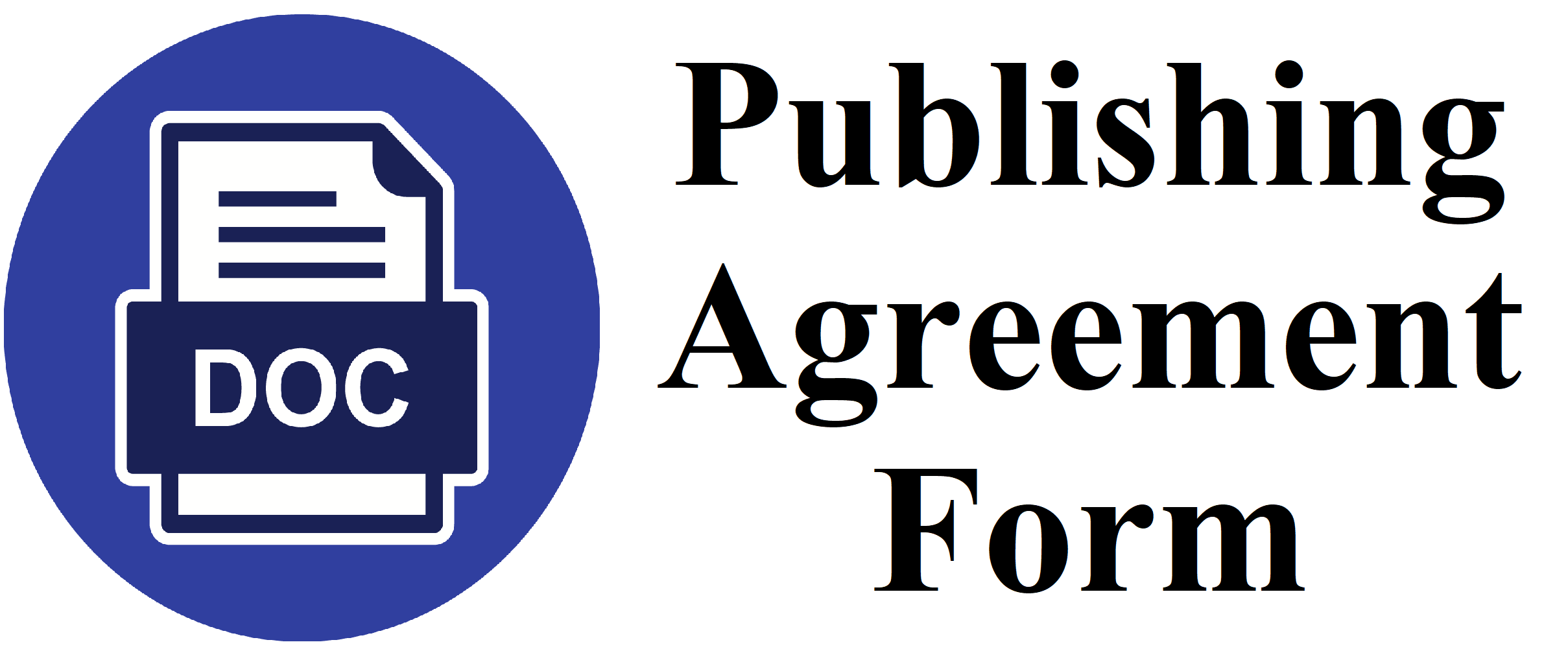Author Guidelines
All manuscripts must be submitted to IJIMCE : International Journal of Innovation in Mechanical Construction and Energy
to Editorial Office through Online Submission by assessing the following address: https://ijimce.ppj.unp.ac.id/index.php/ijimce/login, where author must register as Author. If authors are experiencing problems on the online submission, they can contact Editorial Office at email: ijimce@ppj.unp.ac.id
The following documents must be submitted together with the manuscript (as supplementary files):
A Manuscript with camera ready format under following template (download template.doc) or free format submission. However, for free format submission, the minimum requirements of citation and references format must be fulfilled.
A cover letter, outlines the basic findings of the paper and their significance.
List of Potential Reviewers for your manuscript. Please send the detail by their email and affiliation address.
Please also provide ScopusID, Publon ID or ORCID of authors when you submit the manuscrpt via online submission system.
English editing
To facilitate proper peer-reviewing of your manuscript, it is essential that it is submitted in grammatically correct English. If you are not a native English speaker, we recommend that you have your manuscript professionally edited before submission or read by a native English-speaking colleague. Professional editing will enable reviewers and future readers to more easily read and assess the content of submitted manuscripts.
The submission with poor English quality will be directly rejected.
Reviewing manuscripts
Every submitted paper is independently reviewed by at least two peer-reviewers. Decision for publication, amendment, or rejection is based upon their reports/recommendation. If two or more reviewers consider a manuscript unsuitable for publication in this journal, a statement explaining the basis for the decision will be sent to the authors within three months of the submission date.
All manuscripts will be checked for plagiarism detection, and therefore we strongly encourage authors to do themselve similarity test before submission. The manusrcipt has higher 20 % similarity will be directly rejected.
Revision of manuscripts
Manuscripts sent back to the authors for revision should be returned to the editor without delay. Revised manuscripts can be sent to editorial office through the Online Submission Interface (https://ijimce.ppj.unp.ac.id/index.php/ijimce/login). The revised manuscripts returned later than three months will be considered as new submissions.
STANDARD PAPERS. Original articles (at least 6000 words) inclusive of all parts of the paper . Typescripts should be arranged as follows, with each section starting on a separate page.
Title Page
A concise and informative title.
A list of author names, affiliation(s), and e-mail addresses.
The name, complete mailing address (including e-mail address, telephone and fax numbers) of the corresponding author.
Abstract. A concise and factual abstract (150-250 words) is required. The abstract should state briefly the purpose of the research, the principal results and major conclusions. An abstract is often presented separately from the article, so it must be able to stand alone. For this reason, References should be avoided. Also, non-standard or uncommon abbreviations should be avoided, but if essential they must be defined at their first mention in the abstract itself.
Keywords. A list in alphabetical order not exceeding ten words or short phrases, excluding words used in the title and chosen carefully to reflect the precise content of the paper.
Introduction. State the reason for the work, the context, background, aims and the hypotheses being tested. End the Introduction with a brief statement of what has been achieved.
Materials and methods. Include sufficient details for the work to be repeated. Where specific equipment and materials are named, the manufacturer’s details (name, city and country) should be given so that readers can trace specifications by contacting the manufacturer. Where commercially available software has been used, details of the supplier should be given in brackets or the reference given in full in the reference list.
Results and Discussion. State the results of experimental or modelling work, drawing attention to important details in tables and figures and discuss them intensively by citing other refrences.
Conclusion. Give the main findings and conclude the result and discussion
Acknowledgements. Be brief. If authors refer to themselves as recipients of assistance or funding, they should do so by their initials separated by points (A.B.C .e.g). Do not acknowledge Editors by name.
References (see Manuscript Specifications below).
Tables. Each table should be inserted in body-text and numbered as well as accompanied by a legend at the top. These should be referred to in the text as Table 1, etc. Avoid duplication between figures and tables.
Figures . Figures and their legends should be inserted in body text manuscript. Figures should be referred to in the text as Fig. 1, Figs 1 & 2, etc. Photographic material should also be referred to as Figures. The figures must be in high resolution and no blur.
REFERENCES.
The rules for writing a bibliography in APA Style format are as follows: Last name of the author, first name. (Year of publication). Article title. Journal name, volume (issue if applicable), page(s)
- Ozerdem, M. S., & Kolukisa, S. (2008). Artificial Neural Network approach to predict mechanical properties of hot rolled, nonresulfurized, AISI 10xx series carbon steel bars. Journal of Materials Processing Technology, 199(1-3), 437-439.
- Nasiri, S., & Khosravani, M. R. (2021). Machine learning in predicting mechanical behavior of additively manufactured parts. journal of materials research and technology, 14, 1137-1153.
- Tan, P., Tong, L., & Steven, G. P. (1997). Modelling for predicting the mechanical properties of textile composites—A review. Composites Part A: Applied Science and Manufacturing, 28(11), 903-922.
Guideline for References
Note: Note: (i) Reference must be written in numeric style, (ii) Authors should ensure that all in-text citations appear in the list of references and vice versa, (iii) Title of the journal must be written in full, not in abbreviate, (iv) Strictly adhere the following format of reference.
Journal
Leni, D., Earnestly, F., Sumiati, R., Adriansyah, A., & Kusuma, Y. P. (2023). Evaluasi sifat mekanik baja paduan rendah bedasarkan komposisi kimia dan suhu perlakuan panas menggunakan teknik exploratory data analysis (EDA). Dinamika Teknik Mesin, 13(1), 74-83.
Print/e-Book
Book, E. W., & Book, E. W. (2000). Why the best man for the job is a woman: The unique female qualities of leadership. New York, NY: HarperBusiness.
Chapter in Book
Mettam, G. R., & Adams, L. B. (1999). How to prepare an electronic version of article? In Jones, B. S., & Smith, R. Z. (Eds.), Introduction to The Electronic Age. E-Publishing, pp. 281-304.
Unpublished Proceeding
Sathwanea, S. H., Vairagadeb, V. S., & Kenec, K. S. (2013). Combine effect of rice husk ash and fly ash on concrete by 30% cement replacement. Proceeding of the 3rd International Conference on Civil Engineering, Melaka, Malaysia.
Published/Print Proceeding
Sathwanea, S. H., Vairagadeb, V. S., & Kenec, K. S. (2013). Combine effect of rice husk ash and fly ash on concrete by 30% cement replacement. Proceeding of the International Conference on Civil Engineering, Springer, 38(12), 625-638.
Online Proceeding
Sathwanea, S. H., Vairagadeb, V. S. & Kenec, K. S. (2013). Combine effect of rice husk ash and fly ash on concrete by 30% cement replacement. IOP Conference Series: Earth and Environmental Science, 244, 012007. https://doi.org/10.1109/VR.2006.148
Thesis/Dissertation
Jaini, Z. M. (2012). Multi-Scale Modelling of Protective Ceramic Composite. PhD Thesis, Swansea University.
Research/Technical Report
Ruben, J. S. & Baskar, G. (2015). Experimental Study of Coir Fiber as Concrete Reinforcement Material in Cement-Based Composites. JRC Technical Report No. 328. Institute of Civil Engineering, pp. 123-149.
Corporate Document
Jabatan Kerja Raya (1985). Manual on Pavement Design. Technical Instruction (Road) 5/85. Kuala Lumpur, pp. 30-50.
Standard/Code of Practise
MS1552:2002 (2014). Code of Practice on Wind Loading for Building Structure. Department of Standards Malaysia.
Newspaper Article
Analisis Sungai Bengawan Solo. (2012, April 28). Diakses pada Januari 11, 2020.
Internet Article
Purwadinata, H. (2012, Desember 31). Statistika dan analisis [Halaman web]. Diakses dari http://www.onlinestats.com/12312012/analysisofstats.
Copyright Notice
This journal provides immediate open access to its content on the principle that making research freely available to the public supports a greater global exchange of knowledge. Articles are freely available to both subscribers and the wider public with permitted reuse.
All articles published Open Access will be immediately and permanently free for everyone to read and download. We are continuously working with our author communities to select the best choice of license options: Creative Commons Attribution-ShareAlike (CC BY-SA). Authors and readers can copy and redistribute the material in any medium or format, as well as remix, transform, and build upon the material for any purpose, even commercially, but they must give appropriate credit (cite to the article or content), provide a link to the license, and indicate if changes were made. If you remix, transform, or build upon the material, you must distribute your contributions under the same license as the original.
Privacy Statement
The names and email addresses entered in this journal site will be used exclusively for the stated purposes of this journal and will not be made available for any other purpose or to any other party.
Submission Preparation Checklist
As part of the submission process, authors are required to check off their submission's compliance with all of the following items, and submissions may be returned to authors that do not adhere to these guidelines.
- The submission has not been previously published, nor is it before another journal for consideration (or an explanation has been provided in Comments to the Editor).
- The submission file should be in MS Word format NOT in Adobe Acrobat document (pdf file) format
- Where available, URLs for the references have been activated and ready to click. The references that have doi number must be provided
- The text is single-spaced and follow author gudilines and journal template. All illustrations, figures, and tables are placed within the text at the appropriate points, rather than at the end
- The text adheres to the stylistic and bibliographic requirements outlined in the Author Guidelines, which is found in About the Journal.
- English grammar and typographical errors were carefully checked, and the similarity test must be below than 20%.
- The authors must provide suggested reviewers. Please provide valid email address and affiliations
- The authors agree to the JOURNAL PUBLICATION POLICY: All accepted peer-reviewed papers will be asked to pay an article processing cost(APC)
Author Fees
IJIMCE being a nonprofit Journal, does NOT charges publication/processing fees from the Author(s). NO subscription fees is levied for Libraries / Individuals. NO fees is levied for accessing published articles.



